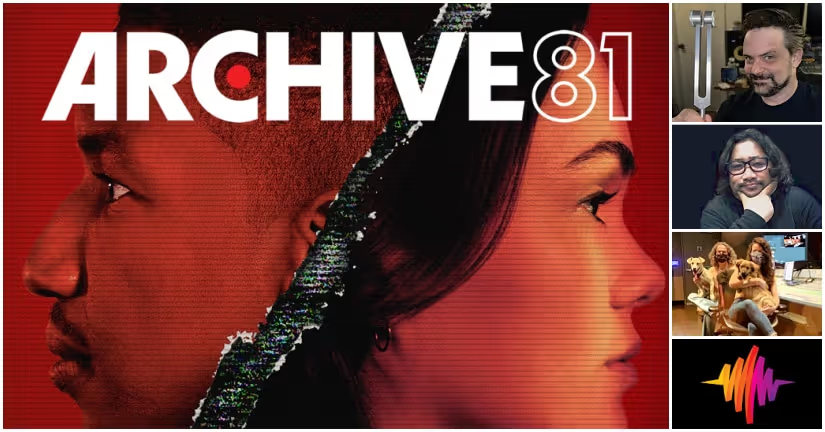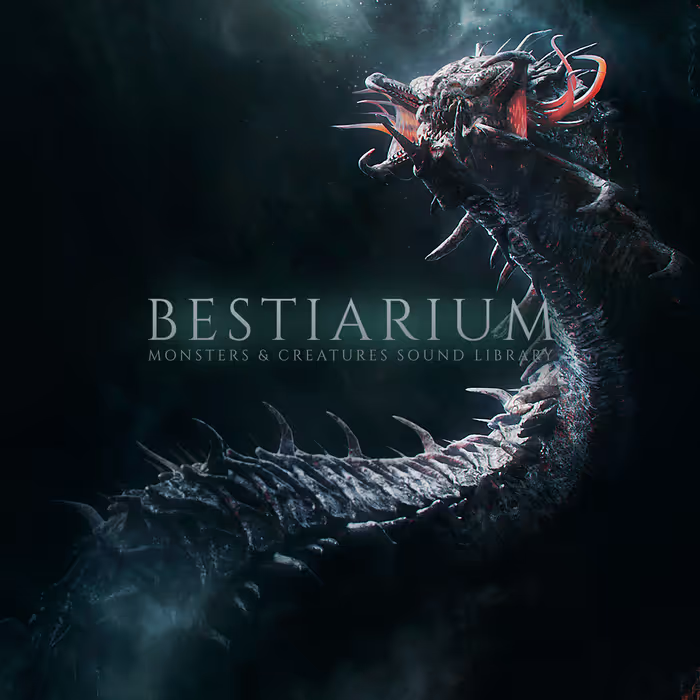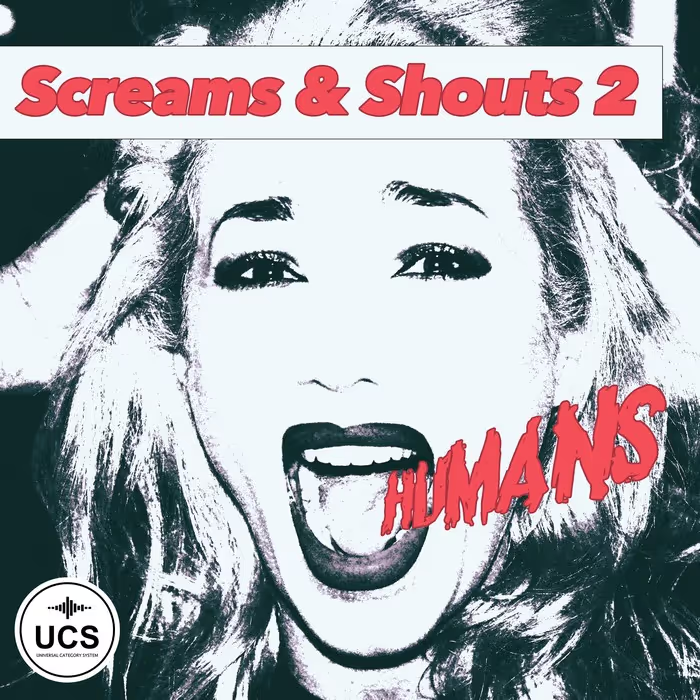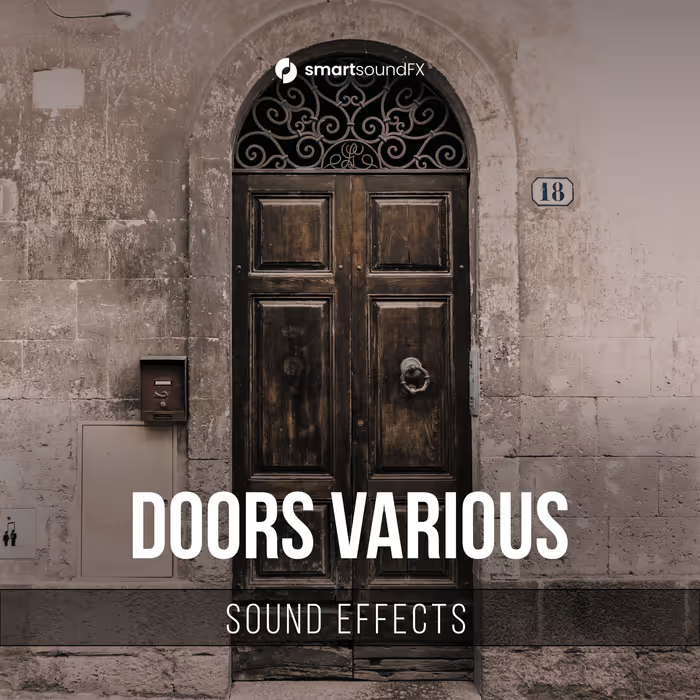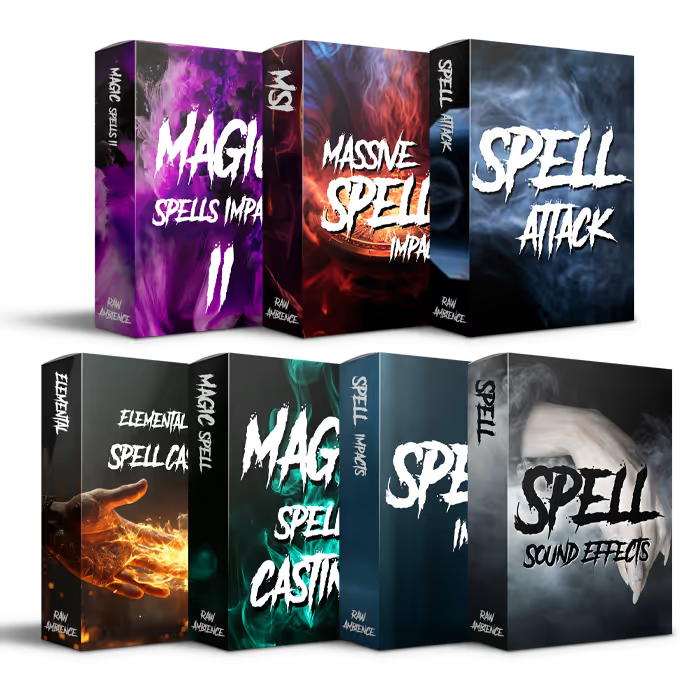Here, supervising sound editor Mark Relyea and sound designer Daisuke Sawa talk about designing scary sounds using static, building a supernatural portal, creating the voice of the demon Kaelego, and enhancing the ritual chanting of the cult followers.
Re-recording mixers Alexandra Fehrman and Richard Weingart discuss the use of the Dolby Atmos surround field, and the processing chains used to create different perspectives in the series.
Netflix’s horror series Archive 81 – executive produced by horror film paragon James Wan, known for directing Saw, Insidious, The Conjuring, and more – whisks audiences back to the 1990s when camcorders and tape decks were all the rage. The inherent static of these mediums offered the post sound team ample opportunity to create cool, spooky sounds. The static even morphs into a demon named Kaelego (voiced by supervising sound editor Mark Relyea).
Archive 81 is partly told through video captured by a missing woman, Melody, whose story is uncovered by video archivist Dan Turner hired to restore and log the damaged footage. Melody’s ‘documentary’ centers on an apartment building and its inhabitants. She moves into the building and begins interviewing the residents; their strange behaviors set her on edge. She encounters odd noises – like chanting or singing – coming through the vent in her wall, which lead her to a common room where a ritual is taking place. The deeper Melody digs into residences’ mystery, the more dangerous her situation becomes.
Here, Relyea and sound designer Daisuke Sawa – at Formosa Group – talk about building the ritual chanting in loop group, recording static and ambience sounds, creating the swirling vortex of a portal that’s opened up, designing supernatural sounds for the seance, and more.
Re-recording mixers Alexandra Fehrman and Richard Weingart, who mixed the show at Formosa, discuss their use of Dolby Atmos to pinpoint specific sounds in a space and to immerse the audience in big moments like the portal opening. Fehrman also talks about how she handled the perspective changes between ‘reality’ and viewing events through Melody’s camera.
Archive 81 | Official Trailer | Netflix
There are so many cool opportunities for sound in Archive 81! As you were going over the script, what were some initial sound design ideas that came to you right away?
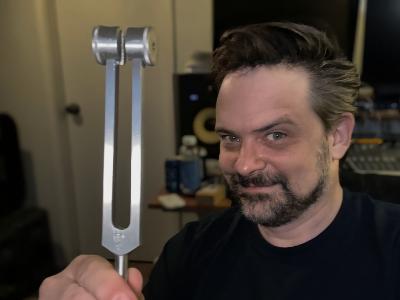
Mark Relyea (MR): As we went through it, we discussed the static sounds and the vintage camera that would be used. The script gave us a heads up. Then when we finally saw the picture, we were able to see how we could build everything together.
Daisuke [Sawa] was great because he found all the right sounds for the camera, and he recorded his own sounds. We had so much time to prep for this show that he was able to record authentic sounds we needed for the show.
One of the best things about this series is that we got so much time to work on it and prepare, and that made our lives so much easier.
Daisuke Sawa (DS): We got involved during the picture editorial process. That’s completely different from a standard TV post-production schedule. We had a much longer time to work on this show so I had lots of time to capture field recordings, and to track down and buy old equipment on eBay – like old Walkmans, and an old Sony cassette player that had pitch control. I had lots of time to experiment.
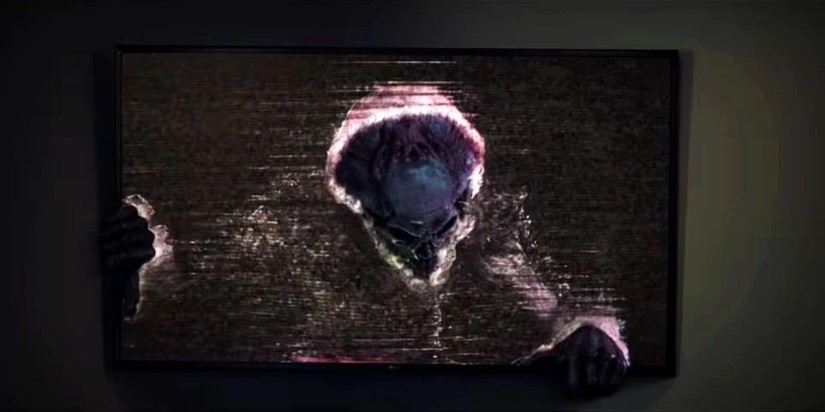
Static plays a huge role sonically. There are sounds coming through the static. And eventually, we meet ‘the face in the screen.’ Can you talk about your static recording sessions? Also, how did you design the sound for ‘the face’ that tries to break through Dan’s monitor screen?

DS: I ended up buying several tape decks on eBay, but the first three were broken. The fourth one I bought was finally good enough for me to use. It was a Sony tape deck with pitch control. That was useful for when they were playing an old recording of the chanting sound.
To create that big static sound, I created an LFE track for the static, to make it bigger and to add more body.
For ‘the face in the screen,’ that was trial and error. I experimented with lots of different stuff, including sounds from A Sound Effect, like Analogue Noise from Carma Studio. That collection had some useful static sounds.
As ‘the face’ tries to break through the screen, there were sounds of the glass cracking open. I added some convolution reverb to those impacts and glass cracks.
If you listen carefully, you can hear my voice as Kaelego buried in all the work that Daisuke did.
MR: The ‘face in the screen’ that’s the demon Kaelego. I actually performed that voice under the demon sounds myself. You can hear the voice faintly, and that’s actually me speaking some “demonese” in a deep voice. But my voice is naturally higher-pitched than Kaelego, so I had to slow down and pitch down my performance ever so slightly.
If you listen carefully, you can hear my voice as Kaelego buried in all the work that Daisuke did. This was an element that we added on the stage. It was so much fun!
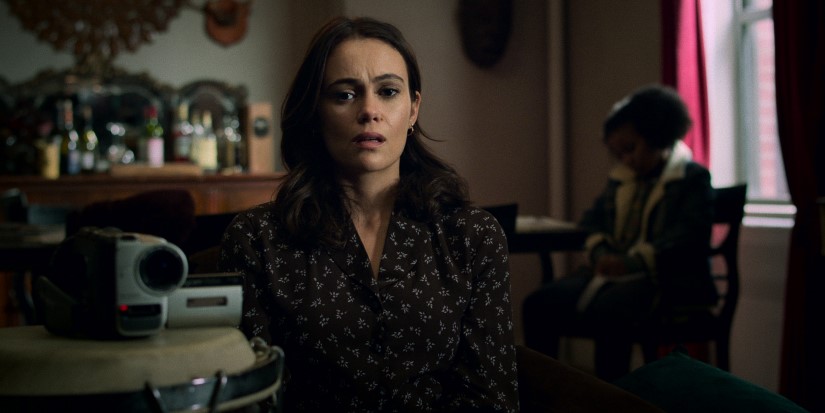
In addition to the old tape decks, were you able to find a camera like the one that Melody has in the show? (I actually think I own one of those!)
MR: I remembered I own one too! But I didn’t think about it until after we were done with the show. When I realized that, I thought, “Oh dang, I should have given this to Daisuke!”
DS: I didn’t know you had one!
MR: I didn’t tell you because I was embarrassed I forgot. Sorry, Daisuke. Don’t hate me.
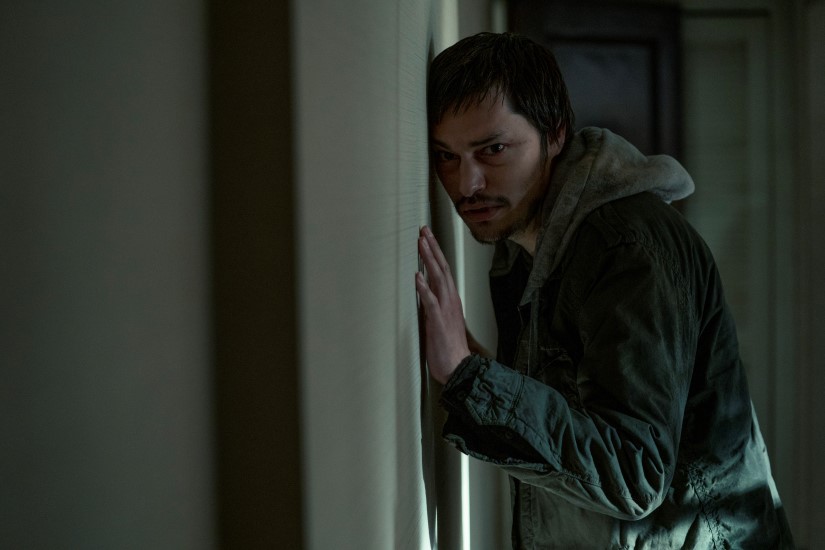
Melody discovers a strange humming/chanting sound happening in her building. And like the static sounds, the chanting evolves over time. How did you create this chanting sound? How does your sound work for this fit with the score?
MR: The composers Geoff Barrow and Ben Salisbury had a choral chant in the music. So in loop group, we emulated that sound in a more organic way. The score takes a musical approach (like a traditional choral sound), but we wanted it to sound like people were actually in the room, as well.
We also added a ghost whisper track to get that supernatural feeling.
You hear the ghosts, the loop group chanting, and the score creating this giant sound that surrounds the room in Atmos.
Gradually throughout the run of the series, we introduced a bit more and a bit more of it until we get to the climax where you really hear it come together. You hear the ghosts, the loop group chanting, and the score creating this giant sound that surrounds the room in Atmos. That really makes it creepy. And Daisuke had some pretty fantastic stuff in there, too.
Between all the departments, we got some awesome material for Atmos, and that got the sound to a place where it was really creepy.
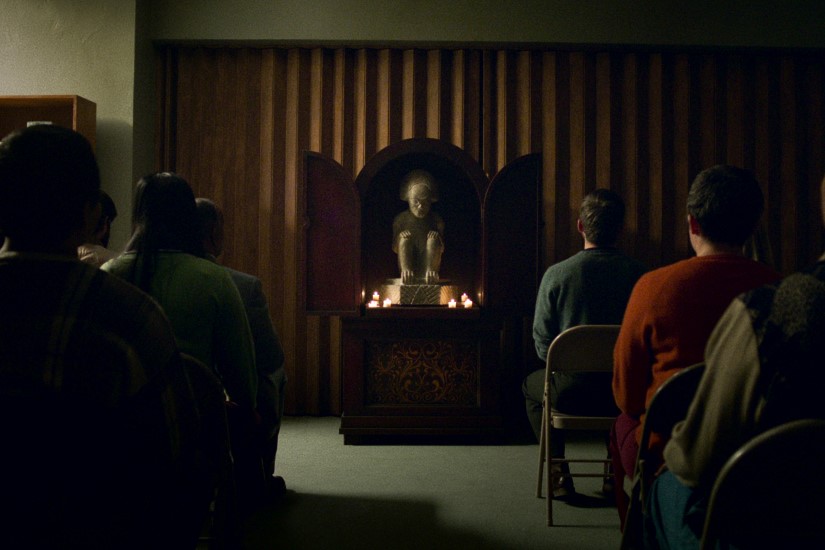
In Ep. 2, Melody stumbles onto the building’s residents gathering at this odd shrine. They hum and breathe together and it builds to a crescendo. Is that where the Atmos mix really shines?
MR: We used Atmos a lot in the supernatural moments. It was a great way to utilize it. Not many home viewers have an Atmos setup, but for posterity, we wanted the show to sound full, to sound big and creepy in all the right moments.
On the dub stage, the mix is so immersive. It’s all around you and it sounds really fantastic. You’re enveloped by this supernatural sound.
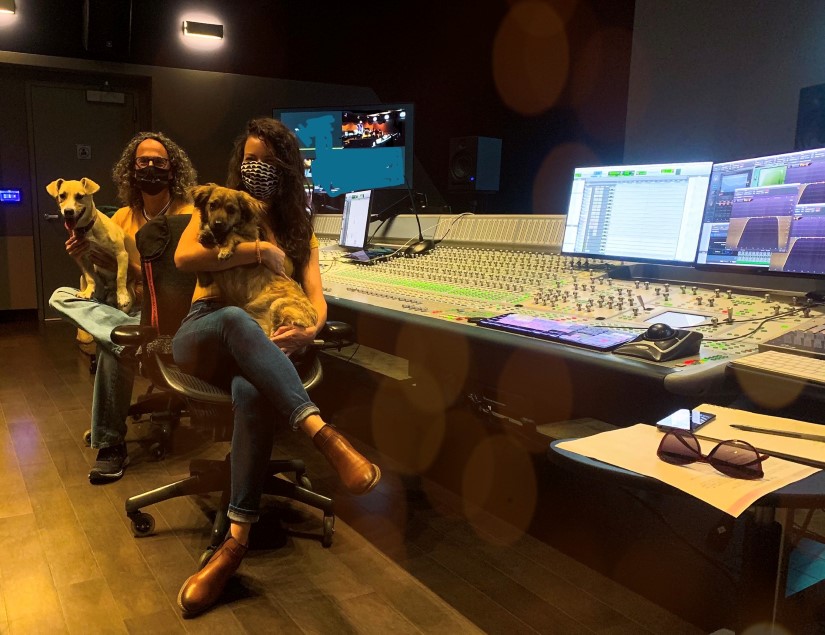
Alex and Rich, can you talk about your use of the Atmos surround field for supernatural events, such as the final ritual ceremony when the portal opens up? Are there any other places in the series where the Atmos mix really shines?
Alexandra Fehrman (AF): Rich and I love working in Atmos.
Richard Weingart (RW): I really feel that it adds clarity, definition, and better separation than traditional 5.1 mixing.
AF: And we are both really pleased with how it folds down.
I really feel that it adds clarity, definition, and better separation than traditional 5.1 mixing.
RW: I really used the height and width that Atmos offers when mixing the tuning forks and meshing that with the sound of the portal.
AF: Yes, I really enjoyed the way Rich mixed them; they were beautifully resonant and felt like they were all-encompassing, taking full advantage of the space Atmos provides us to work in.
For me, in Ep. 7 I used Atmos to establish the music in the party as we moved around it. Another instance where Atmos really shone was when Dan discovers the basement in the compound. We see a mural of Melody’s videos playing back and I was able to place them all around us, each one tied to a specific space.
Of course, another great use of Atmos was when Melody was hearing the humming through the radiator. Being able to pinpoint where that eerie sound was coming from was very useful.
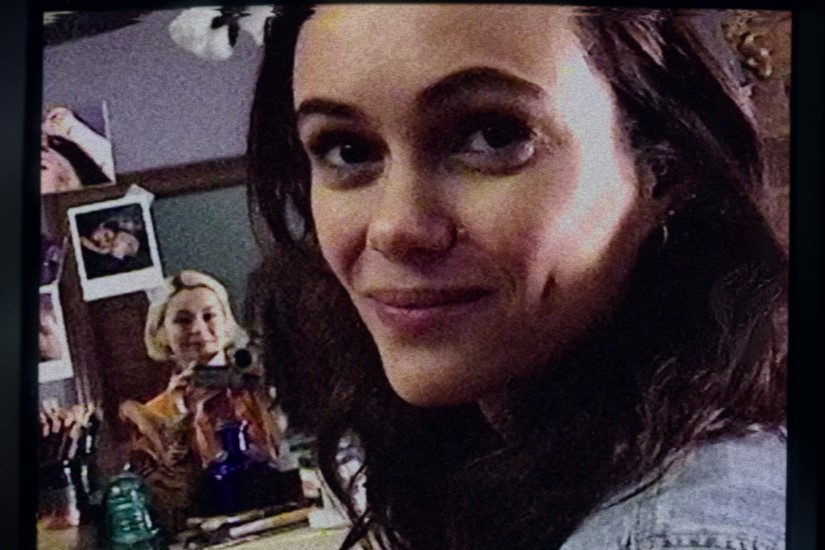
At times, we experience the show through Melody’s camera; other times; we hear her audio recorded on her camera playing back through the speakers that Dan is listening to. Can you talk about your different processing chains for these different perspectives?
MR: Different channels had different filters so we could play the sound as the ’90s camcorder, or the video monitors that Dan looks at, as well as the vintage programming at the beginning of every episode. Much of that was done by Alex [Fehrman] since she was the dialogue/music mixer. She had some really nice filters that she put on all that stuff.
We then incorporated Daisuke’s sound work into that. He designed all the internal sounds for the camera – for instance, when Melody uses the zoom that has a certain sound. And there’s a static bed.
AF: From the moment we saw the first cut of Archive 81, Rich and I were so excited about how much of a sonic personality these playback videos would need to have.
For Melody’s playback footage, her dialogue was treated with a combination of EQ, saturation, distortion, and (in some cases) reverb.
We were very fortunate to have the time to really find what these images were asking for. On our very first mix day, a lot of time was spent ‘trying on’ different treatments.
For Melody’s playback footage, her dialogue was treated with a combination of EQ, saturation, distortion, and (in some cases) reverb.
Rich also found a futz chain that helped glue the sound effects from Melody’s world to her dialogue, and any music she was hearing.
In a lot of cases, he would add pops, ticks, and ‘tape’ sound – some added by our sound designer Daisuke, and some processed to really authenticate the sound.
From there, we would use reverb and set an additional EQ profile for the source and location where her footage was being played, whether it was on Dan’s home set up, or through his speakers at the compound.
As the series progressed, we had a world of opportunity as we had different camera sources to match.
As the series progressed, we had a world of opportunity as we had different camera sources to match. Obviously, there was Melody’s camera, and also Jess’s handheld camera, which was a PXL 2000. This camera had a unique profile because it was recorded on cassette tapes, and so we had to find a way to match what we imaged to be the quality of this recording, especially given what it had been through.
Aside from the cameras, there was the playback for the first Visser ritual, which (as revealed in Ep. 7) had been recorded in the 1920s. Our executive producer Rebecca Sonnenshine really had a specific idea and reference for this. We wanted that playback to sound as if it was a wire recording (but still intelligible), and we worked together to find that sound.
[tweet_box]Crafting Unsettling Audio for Netflix’s ‘Archive 81′[/tweet_box]
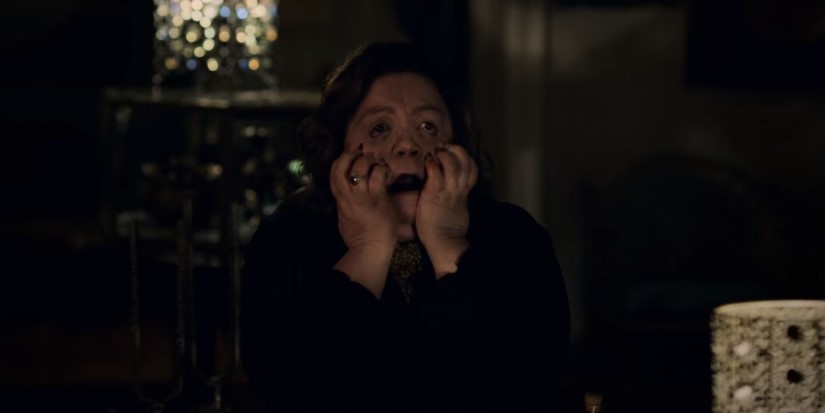
In Ep. 4 there’s a seance and the medium Beatriz goes through a series of possessions. How did you approach the sound for her?
DS: The moment when Beatriz rips her face open was a very shocking moment. I got scared even when I was working on it.
We had some sounds for the candles burning, and some wind sounds in the background. There were spirits sounds, like vocalization, mixed into that. And, of course, the gore for her face.
MR: We had some of our spirit ghost voices going through there, too.
For her vocal effect, when she does the demon voices, I had her lines recorded in loop group, with both male and female voices. They are in sync with her voice, and then we pitched them down and made them demonic. So her voice there is mixed with other voices.
I also tried The Cargo Cult’s Envy plugin, using the Character Vox feature to add in an animal vocal to enhance the demonic quality of the sound.
…the key was the loop group voices. They added a multi-layer effect to the sound.
But the key was the loop group voices. They added a multi-layer effect to the sound.
Since there isn’t a lot of other loop group opportunities in the show – there aren’t many scenes with big crowds, for instance – we were able to focus the loop group on design elements, on the more unconventional material.
I have to shout out The Loop.Group – Kevin Sutherland and Jennifer Foley. They are amazing. The creativity that they come up with is so helpful and they’re so gung-ho; they enjoy working on that kind of stuff.
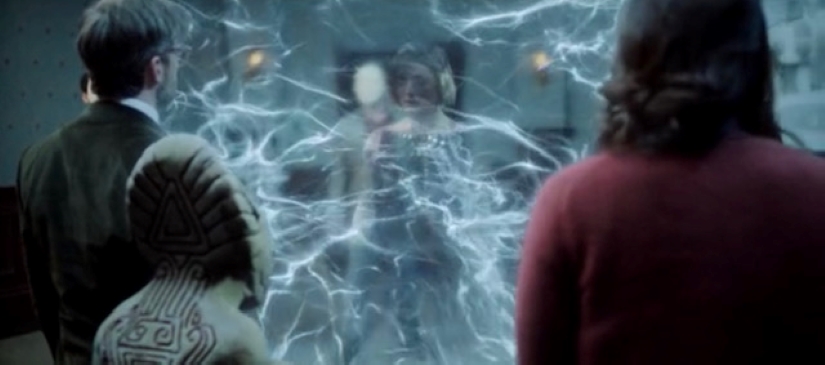
During the final ritual ceremony with Melody, she touches her bloody hand to the statue and it summons this portal of translucent energy. This happens again later and Dan steps into the portal. What went into the sound for these scenes?
MR: That was tough. My memory of creating that is all sucked up into it, as I’m sure Daisuke’s is as well.
We started the show a year ago and we didn’t mix until the fall, so we had a lot of time to think about this portal.
Originally, we had some lightning sounds because that’s how it looks in the visuals. But they didn’t want any lightning sounds.
Even after working on it for six months, we were still trying to figure out what more we could do to get it more over the top. We had a sound that was approved by Netflix and by Rebecca [Sonnenshine]. But we felt like we were missing something when we were on the stage. Daisuke and I went back and forth, adding elements in.
How many layers did we have, Daisuke? Like three or four?
DS: Originally, we had some lightning sounds because that’s how it looks in the visuals. But they didn’t want any lightning sounds. So we had to find some other energy.
Also, the VFX updates were different from what I was working on. I’d always have to revise my work to match the visuals. It was tough.
We used TONSTURM’s Whoosh plugin for Reaktor to create some layers.
MR: Daisuke came up with this awesome base layer. Rebecca – rightfully so – did not want our portal to “sound like an Avengers portal.” That meant no lightning, no water. So what do we use without those elements?
Daisuke came up with a lot of great supernatural sounds, and I got the Whoosh plugin because I was stressed out on the stage thinking about how we can get more (what we call) “texture effects” into it.
When you look at the portal, you can see white streaks floating through it. And I used variations of sounds that I made with the Whoosh plugin. I would create those elements and send them off to Daisuke; he’d sync them up on top of the brilliant sound design that he already came up with to get that extra texture.
I would create those elements and send them off to Daisuke; he’d sync them up on top of the brilliant sound design that he already came up with to get that extra texture.
When we got to the stage with all these extra textures we put in, it sounded amazing but it somehow still sounded detached from the rest of the series. We wondered what we should do about that.
Rich, Alex, and I talked about taking the tuning fork sounds and making those part of the “portal story.” So I played around with tuning forks, as did Daisuke. We made sure they were the same tones as the three that open the portal. We stuck a variation of that into the top of the portal, and that was the missing piece.
Once we had those pieces in, it sounded like that portal belonged in that universe; it belonged with this series.
It was really a collaboration with the eight of us (including the picture editors and Rebecca). We came up with the concept for how that should sound.
The eight of us all think the same way. So the sound job is like a baby that has eight parents. It was a team effort and we got it to where it needed to be. Everyone was happy with it.

Every episode starts with a unique intro. And they’re all very different. One is a commercial for Wellspring genetic testing, one is a documentary clip about asteroids, one is a public access TV show. Those must have been fun to create! What was your favorite intro to work on? What went into it?
DS: I liked the public access TV show with the two geeky guys talking about a movie. It reminded me of when I first came to the US from Japan in 1998. There would be this strange program on at night when I was flipping through the channels. This intro was like that, like a strange public TV show. And I enjoyed putting effects on the bad horror film they showed.
…we weren’t allowed to use the voice that was narrating because you have to credit the actor but we couldn’t find him to get his permission.
MR: I liked the documentary on the comet. It’s an old 1960s documentary – it was public domain – but we weren’t allowed to use the voice that was narrating because you have to credit the actor but we couldn’t find him to get his permission.
So we had to redo that with another actor, Nick Guest. He’s a popular and very talented voiceover guy and he did the voice of our upper-crust New England narrator awesomely!
Everything else in the documentary, I believe, is the authentic sound. We put in a couple of little sweeteners but the voice was the most work, as we had to make it sound vintage to match the documentary. Alex [Fehrman] crushed the voice a bit to make it sound like it was from the ’60s.
Behind the sound of Archive 81: Nageles National Forestfield recording
What are you most proud of in terms of sound on Archive 81?
MR: I’m proud of my team, of our team work. We have a very good working relationship with the mixers. They’re good friends of ours. Sometimes you’ll have crews where the mixers and editors don’t get along because there’s conflict over who does the sound design. But Rich and Alex and Daisuke are a good team to work with.
I also have to give a shout to The Boys Sound Supervisor Wade Barnett who helped me with the ADR shooting and editing.
Daisuke is brilliant. He’s one of the best – if not the best – sound designer I’ve ever worked with.
I’m proud of our editorial team. Daisuke is brilliant. He’s one of the best – if not the best – sound designer I’ve ever worked with. Our foley crew at Sovereign Sound were great. They were enthusiastic and energetic. Everyone had a good attitude.
Working with Rebecca Sonnenshine, co-producer Mandy Price, and Netflix was equally amazing. They were very supportive in allowing us to get where we needed to be sonically, as well as being AWESOME bosses!!!
Everyone got along, including the picture editors (which rarely happens with sound and picture). Daisuke and I both worked one-on-one with the picture editors. They were enthusiastic about our work and we their work. And when everyone gets along on a show, it’s evident in the work. I’m proud of our collective group collaboration.
DS: Before the mix, Rich asked what plugins I used so he had them on the mixing stage. There was great communication with each other. It was a smooth process.
MR: The same is true with Alex and me for dialogue and ADR; we had everything set up ahead of time. Being able to talk with your team members, be ready to go, and have the time to set up, is such a huge help.
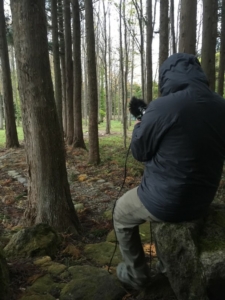
And Netflix gave us the time to do the sound work – twice as much time and sound effects budget as a typical TV series. And that time was used to create sound design even before we locked picture. Daisuke was creating sounds and sending them to the cutting room. They were, in turn, giving us really good notes. Daisuke would then address those notes and send back the sounds. Unlike on other series I’ve been on, it was so much more relaxed. No harassing, no heart-pounding last-minute deadlines, which stunts creativity. It was such a great team and I can’t wait to work with them again. It was so much fun!
DS: I had time to record forest sounds and creepy sounds. I had time to capture field recordings for this show.
MR: Daisuke would send me photos while he was out recording, like on a beach out in the middle of the water that he was recording.
DS: I had fun doing the field recordings.
A big thanks to Mark Relyea, Daisuke Sawa, Alexandra Fehrman, and Richard Weingart for giving us a behind-the-scenes look at the sound of Archive 81 and to Jennifer Walden for the interview!

